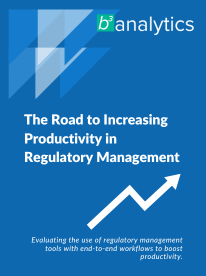
Whether internal or external, audits help provide critical insight into a company's operations, risk, and compliance. They tell you what you're getting right and what you're getting wrong. Audits can also help instill a sense of confidence in the business management and ensure that everything is running smoothly. However, audits can also be time-consuming and challenging to manage, often with a litany of tasks. So, how do you ensure that your audit process stays on track and achieves the desired results (better operational efficiency in the future)?
Let's start with an overview of the internal audit process.

Snapshot: Internal Audit Processes
There are six key stages to an internal audit:
- Planning and Preparation: In this stage, you set the scope and objectives of the audit and determine the timeframe.
- Document Review: Here, you review your internal documents to see how they compare to industry standards and regulations. For example, typically, regulations will require that you have written policies that outline and inform your compliance (to hold you accountable). If your policies are incomplete or outdated and therefore not in line with current standards, then you're not compliant and could risk fines.
- Fieldwork: In this stage, the auditor comes to your business to assess how well your day-to-day operations align with your written policies. As part of this due diligence process, they'll also meet with staff, looking for evidence that policies are being followed. For example, if you have a policy that defines access rights to specific files and software, the auditors will look for things like whether an employee's access rights are updated when they change roles.
- Follow-up: This is the back and forth between the company and the auditor. For example, the auditor might need further documentation or need to ask employees questions to compare the on-the-ground experience to the internal policies. Ultimately, the follow-up stage is about clearing up confusion and ensuring the auditor has everything they need before drafting the report.
- Reporting: The dreaded stage! This is where the auditor drafts a report and submits their findings. Typically, managers have a chance to review the drafted report and respond to the results before the report is finalized.
- Issue Tracking: This is where you confirm and track any issues found during the report and implement internal controls to mitigate or correct the issue. This typically involves showing the auditor that you have an action plan for every issue found.
It seems simple when the audit process is written down in straightforward steps, so why do many companies struggle to manage their audits effectively? It comes down to the sheer number of moving parts and dependencies in each stage.
How to Manage Audit Processes Effectively
Automation is your friend here. Workflow automation tools allow companies to map out the entire audit process, delegate tasks to specific employees, and track progress. The result is a smooth audit process that ultimately saves the company time and money. To understand how, let's look at how these tools work in a little more detail.
The planning/preparation stage of the audit process is critical - it's the bedrock that determines how the rest of the process will go. To get the scope and time frame of the audit, the company needs to engage with key employees in the business who will be responsible for collating or editing documentation or speaking with the auditors. The problem is that these employees are decision-makers or leaders and have busy schedules most of the time. As a result, getting everyone together can be difficult.
But with workflow automation tools, you can schedule meetings and tasks ahead of time, ensuring everyone knows what's expected of them. Workflow automation tools also highlight any resource or scheduling conflicts, so businesses have more transparency into the progress of the tasks and can work towards a solution before the project falls off track.
Further into the audit process, in stages like document review and fieldwork, workflow automation tools allow you to assign tasks to specific employees so you can track their completeness. For example, let's say the auditor can't find your access control policy or your policy refers to another internal document the auditor hasn't yet received. You can assign this document to the auditor to whichever employee is responsible for managing that document. You then know exactly who to go to when the auditor is still waiting on the document or if any issues need to be tracked in that area.


